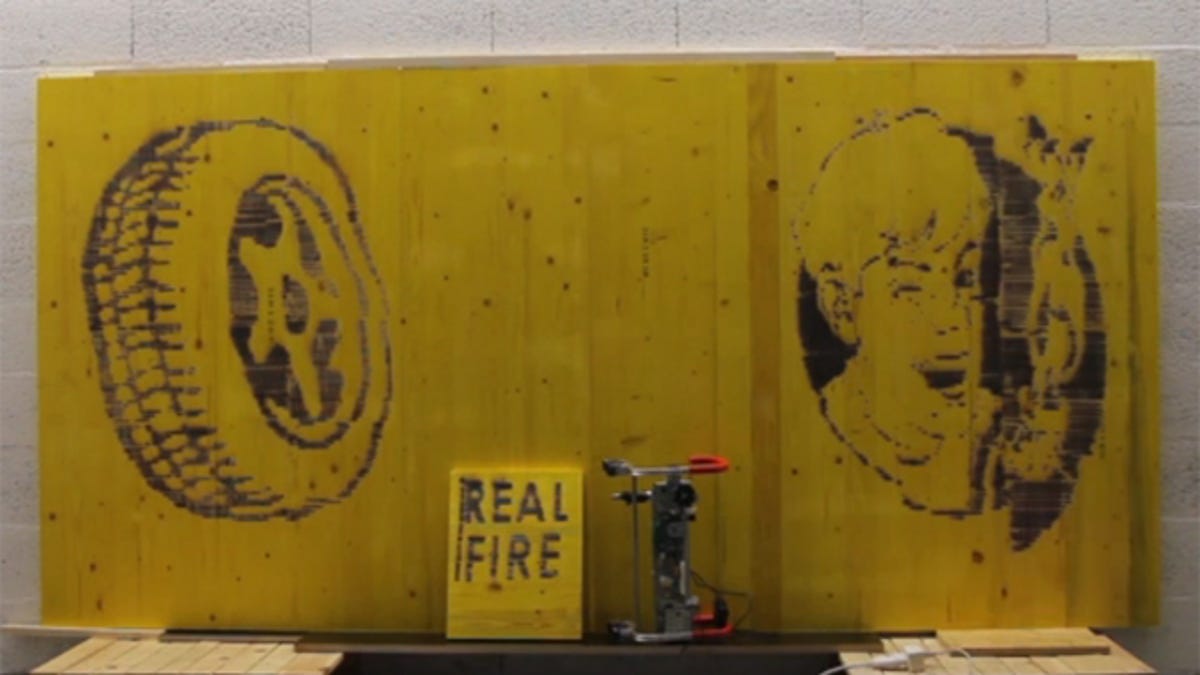Printing with fire
We've seen ink printers, 3D printers, food printers and even human tissue printers — but this is the first printer we've seen that's swapped ink for fire.

(Screenshot by Michelle Starr/CNET Australia)
We've seen ink printers, 3D printers, food printers and even human tissue printers — but this is the first printer we've seen that's swapped ink for fire.
If you have some random bits of wood floating around that you just don't know what to do with, perhaps you could take a leaf out of Lucien Langton's book. The 25-year-old student of the Lausanne University of Art and Design (ECAL) has built a functioning printer for wood that uses fire as a medium.
FireWriter consists of a repurposed inkjet printer controlled with Arduino Uno, a calibration module equipped with an optical sensor and fitted with a Dremel torch loaded with a mixture of butane and propane that burns at up to 1200 degrees Celsius.
A black-and-white image has to be fed into Processing, which then creates a Wiring script that's fed back to the Arduino unit. Langton described his project:
FireWriter is a machine using contemporary rapid prototyping electronics combined with humanity's first technology: fire. The purpose is to propose a dialogue between image reproduction and its destruction. Inevitably, alterations of the support are linked with alteration of aesthetics. The result offers aspects of engraving with a mechanical/pixelised pattern.
The FireWriter operates on the same principle as the old dot matrix printers, laying out an image dot by dot, line by line. However, it does need a bit of manual guidance, with a human controller guiding the printer down each line, resulting in some pretty wobbly looking images. Still, it's a pretty interesting method of pyrography — although it's ironic to note that the more technologically advanced method ends up looking more primitive.
We don't think it's quite ready to catch on.

